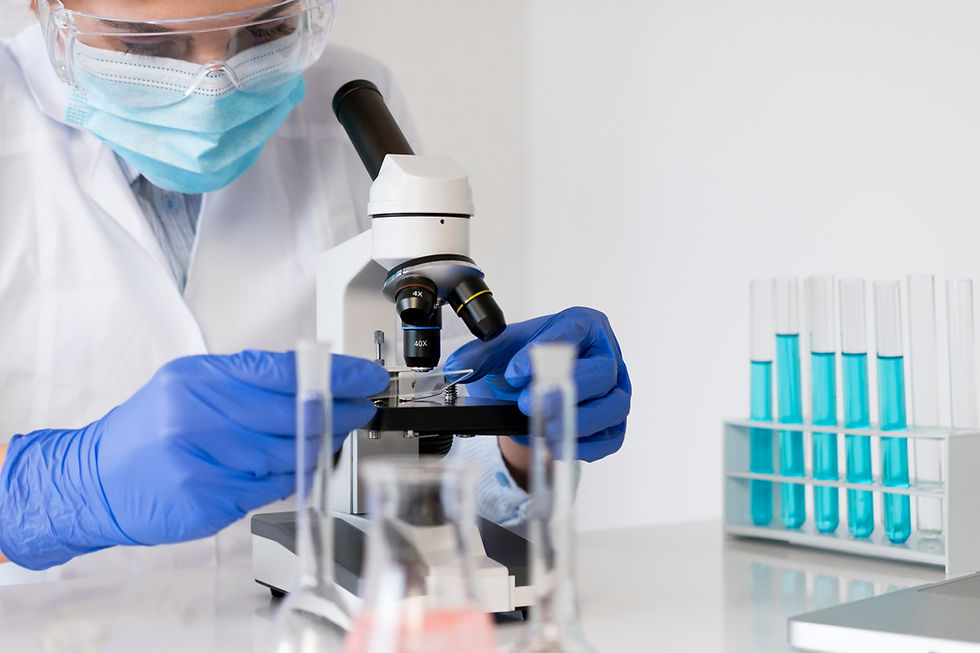Annual Medical Check Up
- Maria Sazhina
- Jan 1, 2023
- 3 min read
Updated: Feb 9

A conscious approach to our health assumes that we run to the doctor not only when something hurts, but we make regular visits to a medical institution for prevention. It is preventive measures that make it possible to detect diseases in time, which a person does not suspect, and which do not bother him in any way. And also to keep chronic diseases under control.
🌱 Medical procedures carried out as part of an annual routine examination are determined by the age and gender of a citizen. However, it is possible to single out a minimum list of studies that must be completed, regardless of gender and age.
👩🏼⚕️ The first on the list will be the consultation and examination of the attending physician. After that, you will receive a detailed plan of the necessary research. If you have chronic diseases, the list of examinations can be expanded based on the recommendation of a doctor.
Here is a list of studies that must be completed yearly regardless of gender and age.
1.
ANTHROPOMETRY

⚖️ Measurement of height, body weight, waist circumference, determination of body mass index.
This information will help you understand whether you are at risk of obesity, metabolic syndrome and / or the degree of violation of fat metabolism.
🫀 measurement of blood pressure and pulse.
It shows the risks of diseases of the cardiovascular system.
2.
BLOOD TESTS
🩸Clinical blood test.
This analysis shows the number of blood cells and their ratio, which is very important for determining some hidden diseases (various types of anemia and other blood diseases)

3.
🩸Biochemical blood analysis
Biochemical blood analysis is a universal method of laboratory diagnostics that allows you to determine the work of all internal organs and systems, to obtain information about metabolism and the body's need for trace elements. The study helps to diagnose, prescribe treatment, establish the stage of the disease.
4.
🩸Coagulogram
Coagulogram (hemostasiogram) is a complex hematological study aimed at assessing the state of the hemostasis system (blood clotting), or blood clotting indicators. The hemostasis system includes blood cells (platelets) and specific substances (clotting factors) dissolved in blood plasma and contained in platelets.
5.
🩸Oncomarkers. Markers of oncological diseases (on the recommendation of a doctor)
Cancer markers are specific substances, tumor waste products, or substances produced by normal tissues in response to invasion of cancer cells that are found in the blood and/or urine of cancer patients and some other diseases unrelated to oncology. The detection of cancer markers allows you to suspect the presence of a tumor in the body at an early stage, conduct large-scale screening studies and monitor the dynamics of the disease during treatment. If an elevated level of one of the cancer markers is detected, additional research methods are required, without which the diagnosis is invalid.

6.
CANCER SCREENING:
👐🏻 Examination for the detection of visual and other localization of oncological diseases, including examination of the skin, mucous lips and oral cavity, palpation of the thyroid gland, lymph nodes;
For women - examination by an obstetrician-gynecologist (from 18 to 39 years old); taking a smear from the vagina to detect infectious diseases; taking a smear from the cervix (PAP-test - cytological examination of a smear from the cervix 1 time a year at the age of 18 to 64 years); cancer markers; ultrasound of the pelvic organ; mammography / ultrasound of the mammary glands. (See our Gynecological Examination program).
💁🏻 Men - examination by a urologist-andrologist; rectal examination of the prostate gland; taking a swab from the urethra for sexual infections; blood for PSA (cancer marker); blood for testosterone. (See our Men's Health program).
7.
URINE ANALYSIS
🟡 Clinical urine analysis
General or clinical urinalysis refers to routine laboratory tests aimed primarily at screening diseases of the urinary system, since pathological processes in the kidneys and urinary tract affect the properties of urine.

🧑 🔬 Sowing urine on microflora.
Bacteriological examination of urine makes it possible to identify pathogens of urinary tract infections at different levels from the kidneys to the urethra.
8
EXAMINATION OF FECES FOR HIDDEN BLOOD
🧑 🔬 Immunochemical analysis of feces for hidden blood is a method of laboratory research, which determines the presence of blood secretions in human feces, indicating internal bleeding of the digestive organs.
Blood in the stool indicates damage to the intestinal mucosa or vessels. This is one of the first symptoms of the first degree of hemorrhoids (at a young age) and bowel cancer after 45 years. If blood appears in the feces, it is necessary to consult a coloproctologist.
Comments